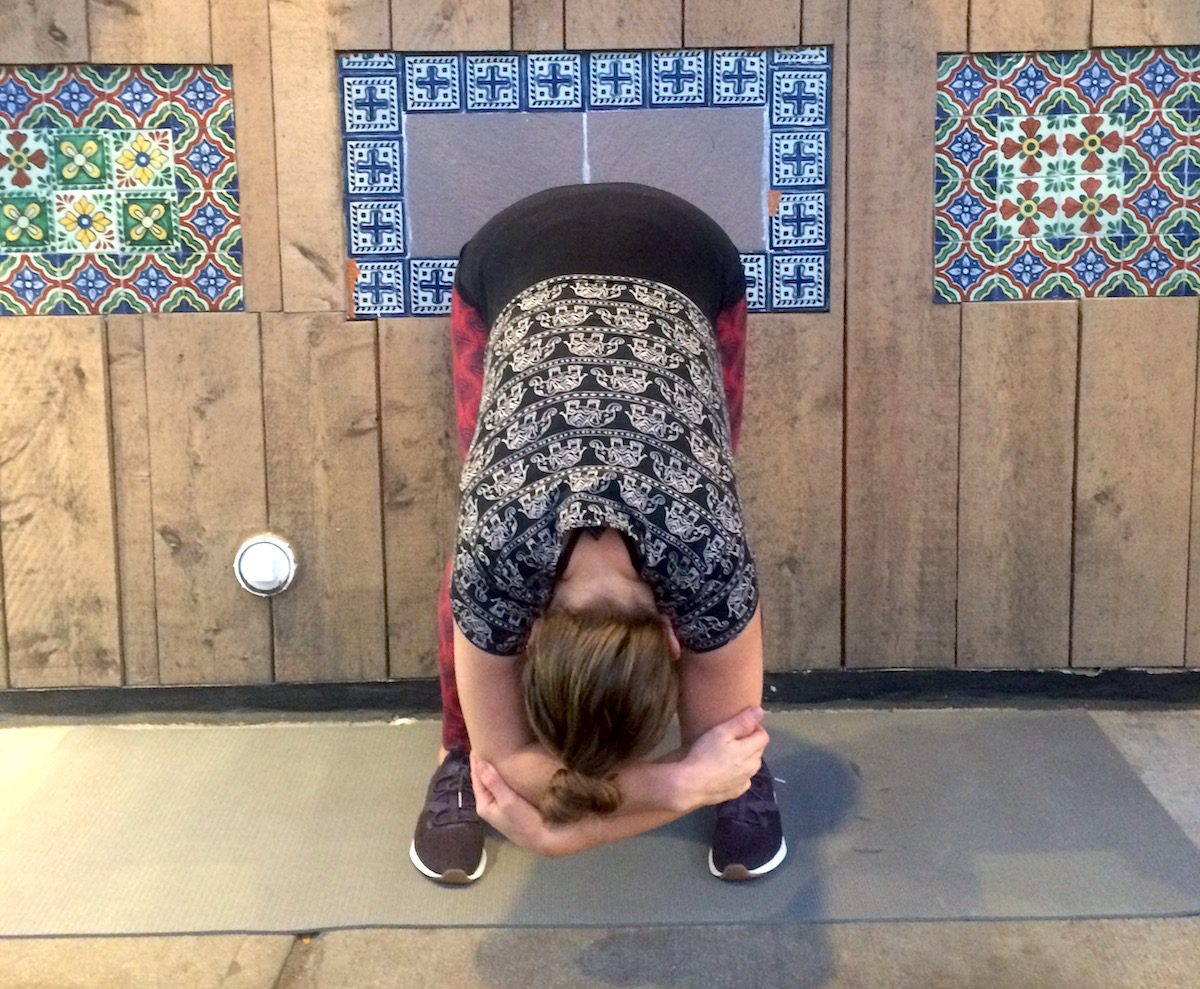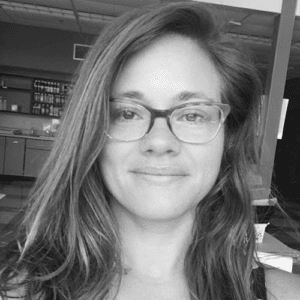Being an art teacher means our bodies and minds are always busy. The movements, breathing, and philosophy of yoga promote a state of calm and relaxation. This is where the stress in our bodies and minds disappears for just a moment, and we can see clearly. Who doesn’t need more of that?
Just like art, yoga can change the way you feel about and respond to the world. Whether you are an anxious art student or a busy art teacher, here are some yoga poses for the bodies and minds of artists.
1. Cat/Cow (with wrist variation)
(Sanskrit: Marjaiasana and Bitilasana)
Cat/Cow is a great way to realign your posture through the movement of your spine.
- Position yourself on all fours with your shoulders over your wrists and your hips over your knees.
- As you inhale, let your belly drop toward the floor while your hips and chest rise.
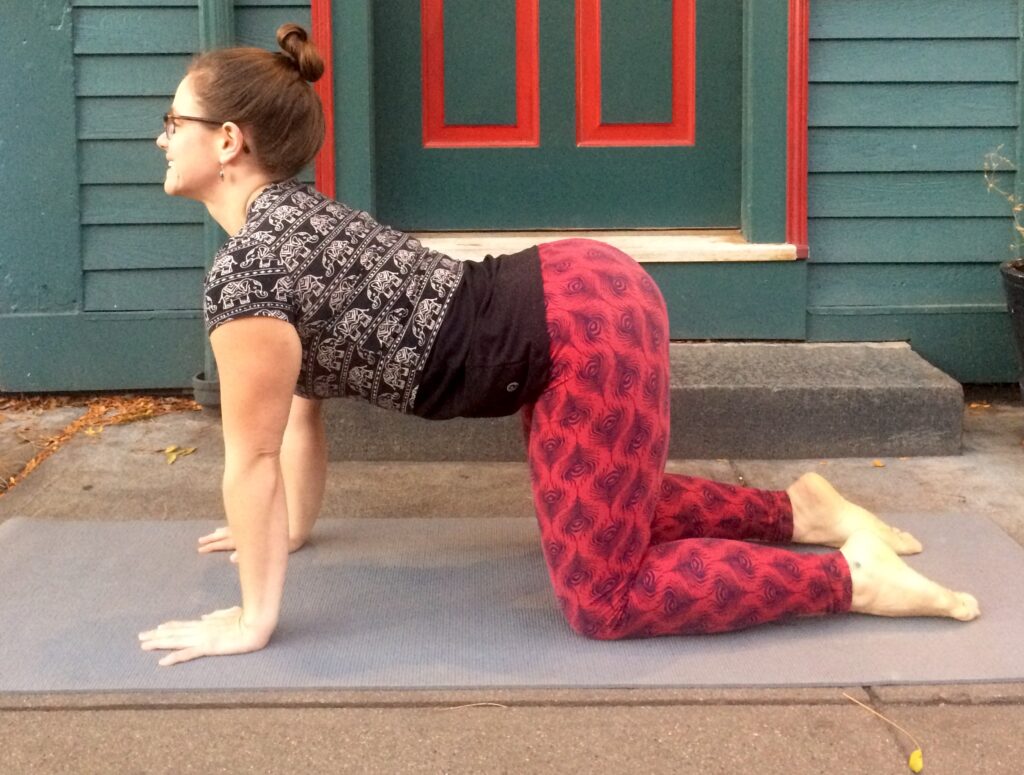
- On the exhale, draw up through your belly button, letting your hips and head drop, rounding like a Halloween cat.
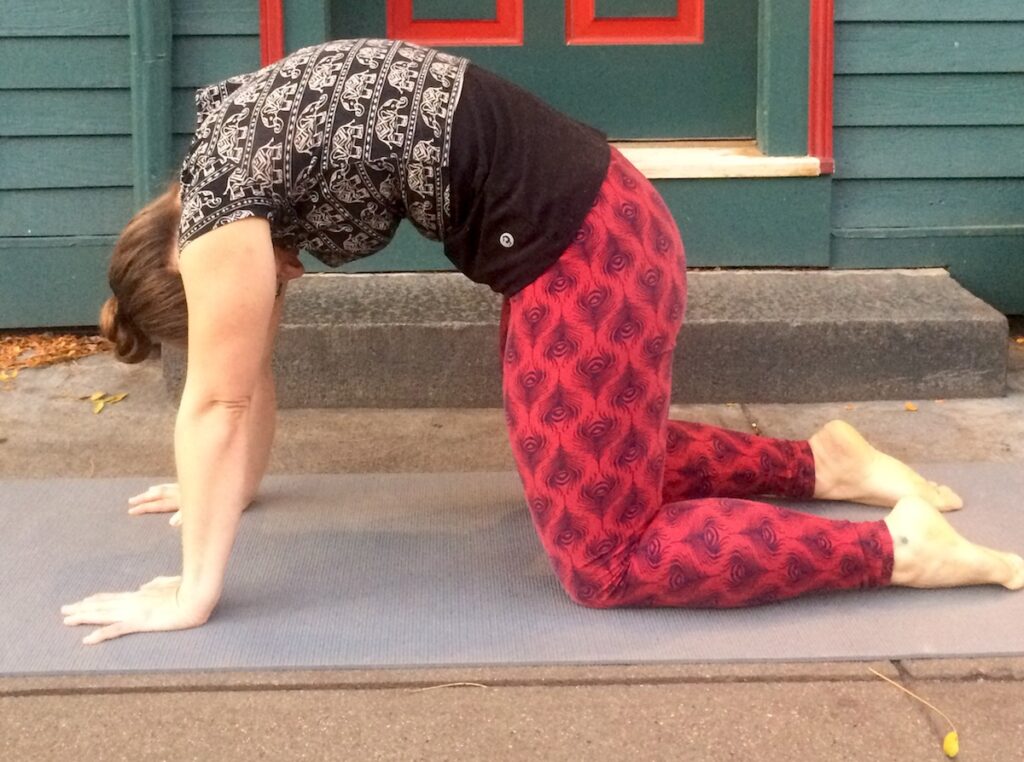
- Repeat this sequence, matching your movements to the length of your breath.
- As you become more in tune with how your spine feels, play around with moving and circling your hips and stretching your sides. Do what feels good to your body.
- After loosening your spine, draw your attention to your wrists.
- Carefully change the position of your hands, so your fingertips point out to the sides. Rock side to side very gently, feeling the stretch in your wrists.
Benefits
- Improves wrist flexibility and strength
- Relieves lower back pain
- Increases blood flow and flexibility
- Enhances creativity and unsticks repetitive thinking patterns
2. Child’s Pose
(Sanskrit: Balasana)
This pose is a great place to return when you’re feeling tired during any yoga practice or after a stressful day.
- Return to all fours and bring your toe tips to touch.
- Keep your hands grounded, and allow your hips to drop back to your heels.
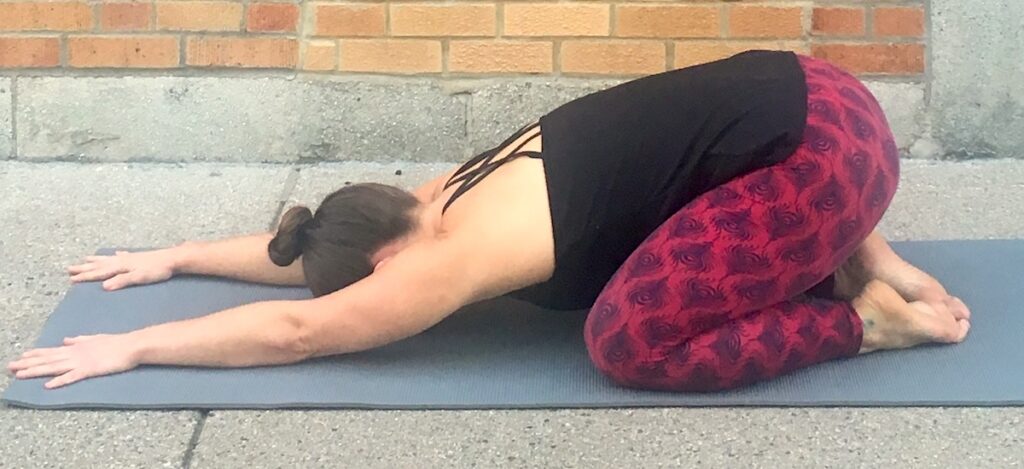
- Play with how wide or narrow your knees are and how that feels in your back and belly.
- Keep your hands and arms reaching forward or to relax your wrists, draw your arms back by your hips.
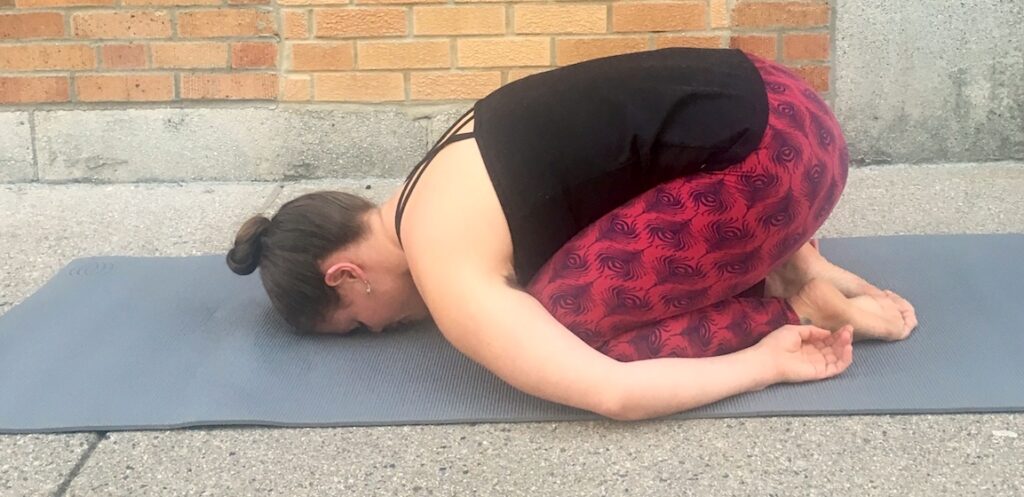
- Take five long, deep breaths feeling your belly and back fill like a balloon. Lengthen your exhales longer than your inhales as this activates your relaxation response.
Benefits
- Calms the mind with forward folding
- Releases tension and stress through passive stretching
- Opens hips where we often hold tension and stress
3. Down Dog
(Sanskrit: Adho Mukha Svanasana)
Yogis recommend going upside down at least once a day. The iconic pose of Down Dog is a great pose for this.
- From all fours, walk your hands a few inches forward of your shoulders.
- Tuck your toes under and lift your hips high. This pose looks like an upside down V.
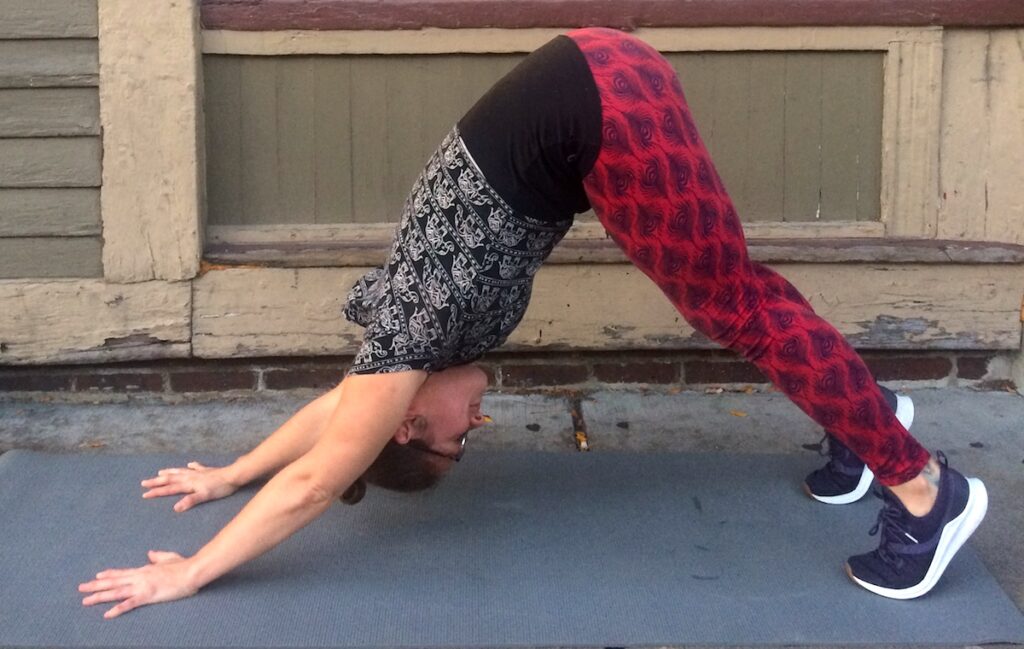
- Press strongly into your fingertips and knuckles and resist the urge to put all your weight in your wrists.
- Bend your knees, especially if your hamstrings are tight, to prevent your lower back from rounding.
- From here take five long, deep breaths, letting your gaze settle on a point between your legs.
- Drop your knees and return to Child’s Pose.
Benefits
- Decreases symptoms of depression and stress (by having your head below your heart)
- Increases strength and stability
- Creates a balanced feeling in the body and mind
- Stretches tired legs and feet
4. Forward Fold
(Sanskrit: Uttanasana)
- From Down Dog, slowly walk your feet to your hands.
- Walk your feet hips width apart and grasp opposite elbows with your hands.
- Bend your knees slightly and gently rock side to side.
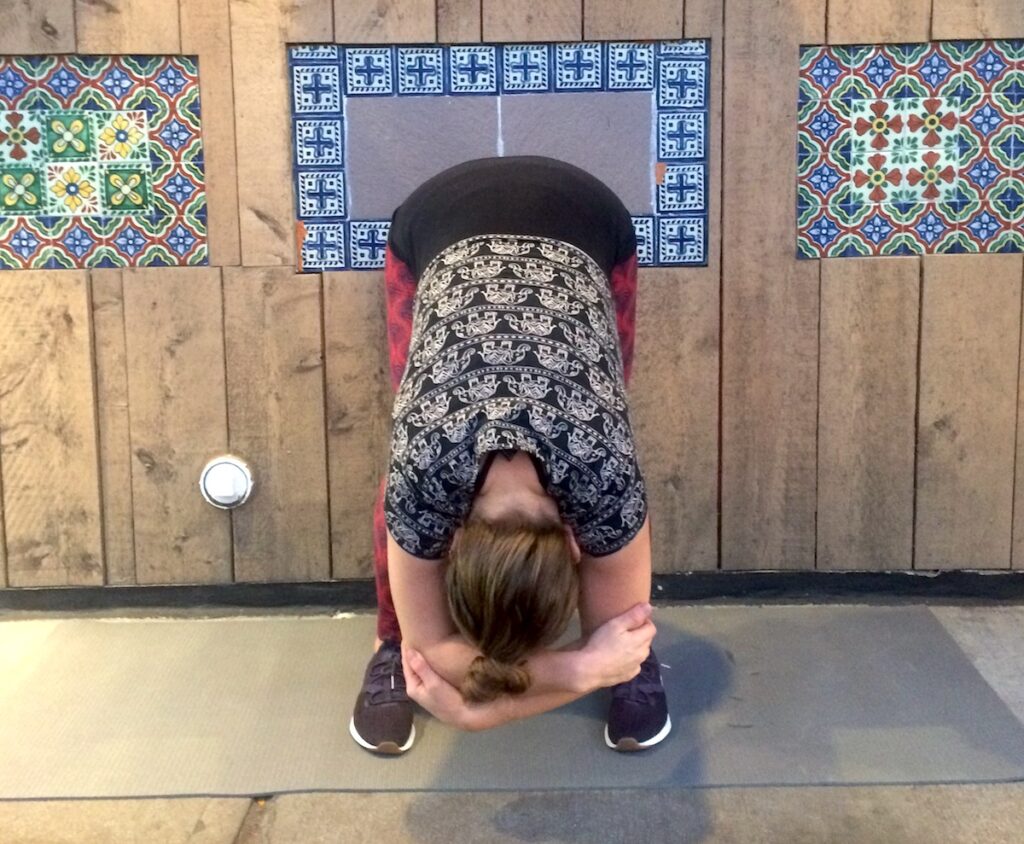
- Relax your neck and shoulders, allowing your head to drop toward the floor.
- Breathe deeply, feeling your belly expand against your lower back and press into your thighs.
Benefits
- Relaxes central nervous system
- Stretches and releases tension in legs and lower back
- Reverses blood flow for increased creativity and stress relief
5. Reclining Bound Angle Pose
(Sanskrit: Supta Baddha Konasana)
This pose is often called Butterfly Pose because of its shape.
- Lie on your back and draw your knees into constructive rest, with feet on the floor and knees bent.
- Allow your knees to drop to either side.
- Depending on how flexible your hips are, you may need a yoga block or blanket tucked under your knees.
- Close your eyes, and bring one hand to your chest and one to your belly.
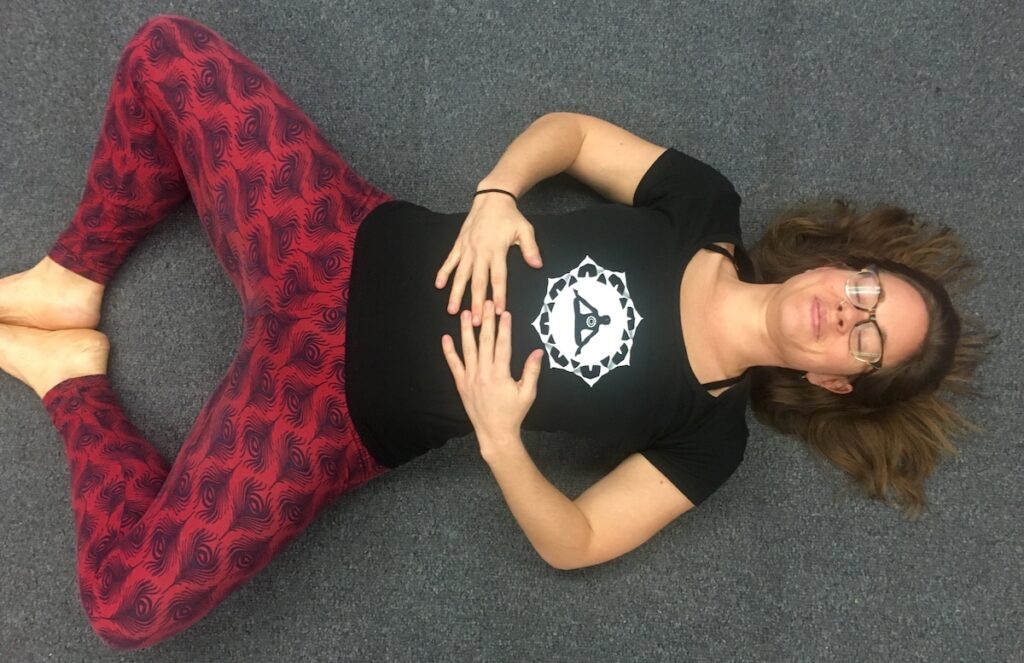
- As you breathe, draw your attention to your hands rising away from one another with your inhale and drawing closer with your exhale.
- Stay here for a few minutes, and then draw your legs straight for the final rest pose, Savasana (sh- vasana) or Corpse Pose.
Benefits
- Releases tension in hips and neck
- Increases relaxation
- With practice, can be a beneficial pose for quiet meditation
Corpse Pose
(Sanskrit: Savasana)
Often overlooked for its passive nature, Savasana is often touted as the most important pose in yoga.
- Lie down on your back with your legs extended straight. (Bend your knees if you have lower back pain.)
- Allow your arms to relax by your sides, palms facing up.
- Breathe deeply and then allow your breath to return to normal.
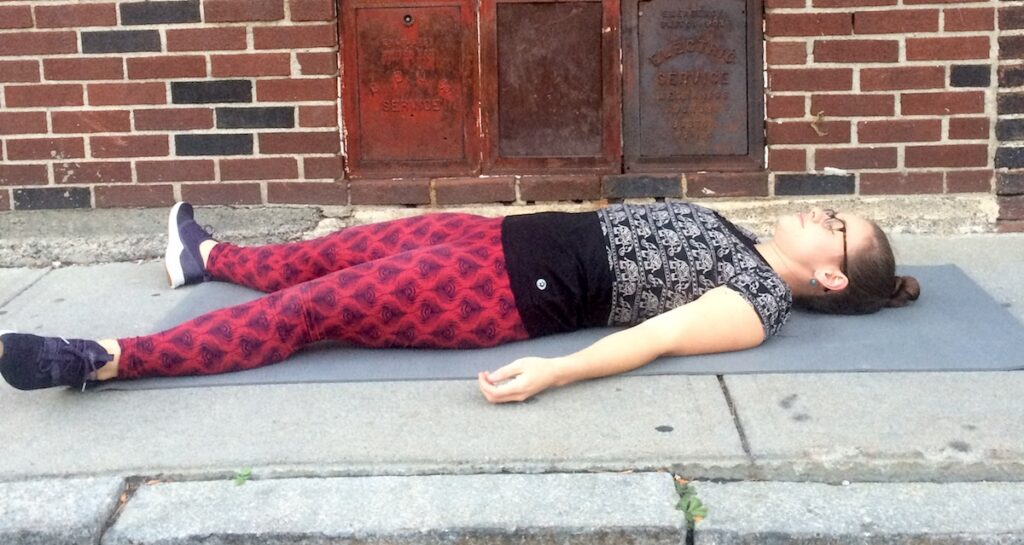
- Stay here for a few minutes, with your eyes closed, paying attention to the rise and fall of your breath.
- When your practice feels complete, gently roll to one side and press yourself up to sitting.
Benefits
- Completely relaxes mind and body
- Allows your body to realign after stretching and movement
The practice of yoga is not a competition or a race. Take your time and remember to listen to your body. If a pose feels painful, stop and choose another pose. Always talk to your doctor before starting a new exercise regimen. If this sparks your interest in practicing yoga more deeply, look for yoga classes in your local area or look up some videos on YouTube!
Have you ever practiced yoga before?
If you haven’t, what is holding you back from trying it? If you have, what’s your favorite Asana or Pranayama to practice as an artist?
Magazine articles and podcasts are opinions of professional education contributors and do not necessarily represent the position of the Art of Education University (AOEU) or its academic offerings. Contributors use terms in the way they are most often talked about in the scope of their educational experiences.
